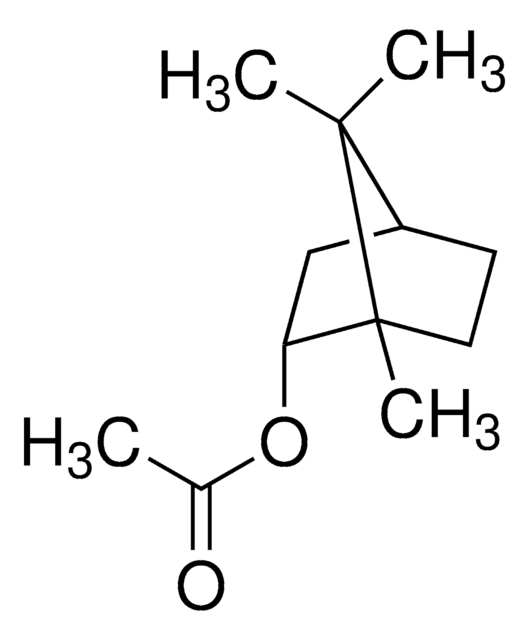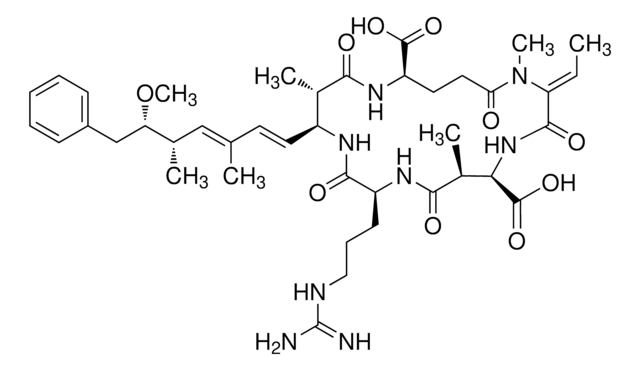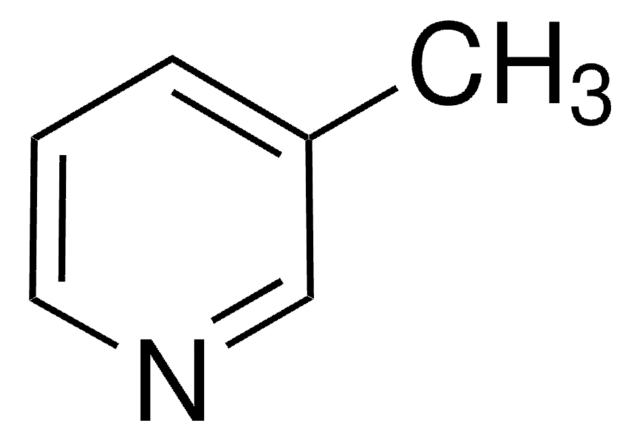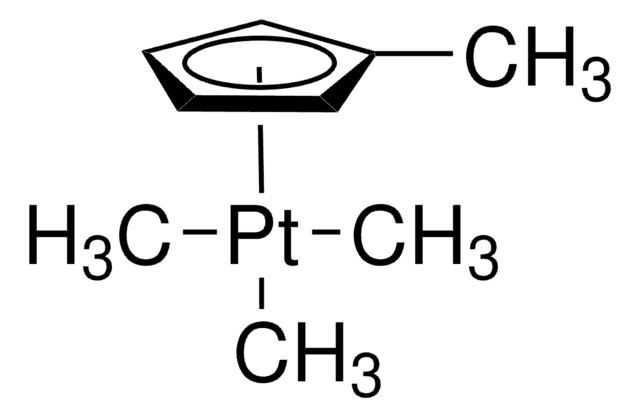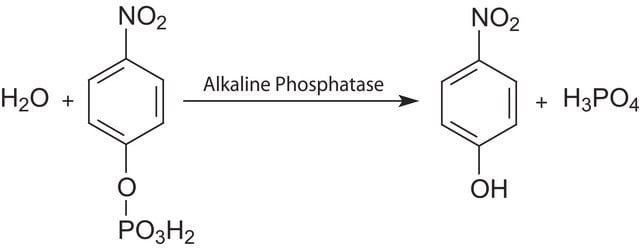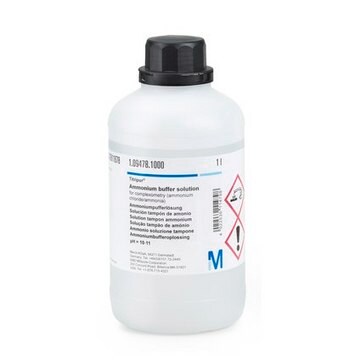A9226
Alkaline buffer solution
1.5 M, pH 10.3 (25 °C)
Sinónimos:
Basic pH buffer
Iniciar sesiónpara Ver la Fijación de precios por contrato y de la organización
About This Item
UNSPSC Code:
12161700
NACRES:
NA.25
Productos recomendados
General description
Alkaline buffer solution, 1.5 M, pH 10.3 at 25 °C is used in alkaline phosphatase reactions. It contains 2-amino-2-methylpropanol (AMP) and is used in conjunction with p-nitrophenyl phosphate (pNPP) enzyme substrate.
Application
Alkaline buffer solution has been used to measure the alkaline phosphatase (ALP) activity in the:
- rat bone marrow stromal cells (BMSC)
- osteoblast-like cells (SaoS-2, ATCC HTB 85)
- mouse MC3T3-E1
Other Notes
Contains 2-amino-2-methylpropanol
signalword
Danger
hcodes
Hazard Classifications
Eye Dam. 1 - Skin Irrit. 2
Storage Class
12 - Non Combustible Liquids
wgk_germany
WGK 1
flash_point_f
Not applicable
flash_point_c
Not applicable
Elija entre una de las versiones más recientes:
¿Ya tiene este producto?
Encuentre la documentación para los productos que ha comprado recientemente en la Biblioteca de documentos.
Los clientes también vieron
Young-Hee Kim et al.
BMC pharmacology & toxicology, 14, 60-60 (2013-12-03)
Indoxyl sulfate (IS), an organic anion uremic toxin, promotes the progression of renal dysfunction. Some studies have suggested that IS inhibits osteoclast differentiation and suppresses parathyroid hormone (PTH)-stimulated intracellular cAMP production, decreases PTH receptor expression, and induces oxidative stress in
Salima Nedjari et al.
Scientific reports, 7(1), 15947-15947 (2017-11-23)
Stem cells therapy offers a viable alternative for treatment of bone disorders to the conventional bone grafting. However clinical therapies are still hindered by the insufficient knowledge on the conditions that maximize stem cells differentiation. Hereby, we introduce a novel
Helle Lysdahl et al.
BioResearch open access, 3(6), 278-285 (2014-12-04)
Clinical trials using bone morphogenetic protein-2 (BMP2) for bone reconstruction have shown promising results. However, the relatively high concentration needed to be effective raises concerns for efficacy and safety. The aim of this study was to investigate the osteogenic effect
Dan Huang et al.
International journal of nanomedicine, 12, 7483-7500 (2017-10-27)
Titanium (Ti) and its alloys have been widely used in clinics for years. However, their bio-inert surface challenges application in patients with compromised surgical conditions. Numerous studies were conducted to modify the surface topography and chemical composition of Ti substrates
Miriam Filippi et al.
Biomaterials, 223, 119468-119468 (2019-09-11)
Exposure of cells to externally applied magnetic fields or to scaffolding materials with intrinsic magnetic properties (magnetic actuation) can regulate several biological responses. Here, we generated novel magnetized nanocomposite hydrogels by incorporation of magnetic nanoparticles (MNPs) into polyethylene glycol (PEG)-based
Nuestro equipo de científicos tiene experiencia en todas las áreas de investigación: Ciencias de la vida, Ciencia de los materiales, Síntesis química, Cromatografía, Analítica y muchas otras.
Póngase en contacto con el Servicio técnico



